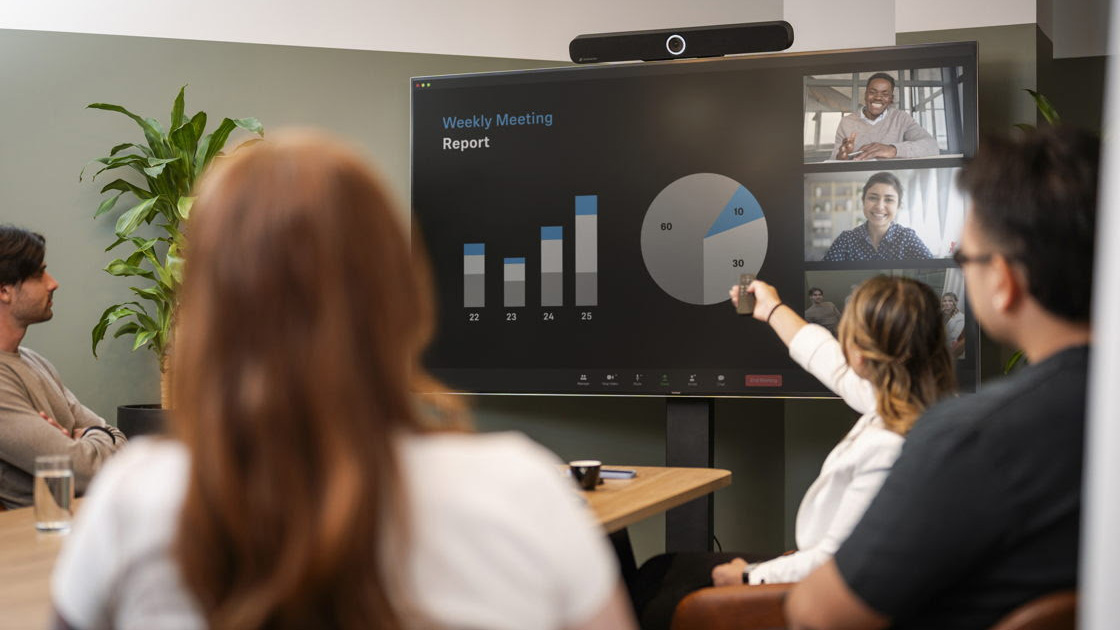6 Ways to Enhance Corporate Video ROI
Add us as a preferred source on Google
Corporate video can be a lot like the proverbial tree falling in the forest: If no one is around to watch, does it really impact business?
- This is a crucial question to answer for video production professionals interested in continued employment. After all, it doesn’t make sense for organizations to continue investing in videos that are never seen by their target audience. For videographers, getting people to watch videos is akin to building job security. On the one hand you have a unique skill set. On the other hand, no one will care about you unique skills if they are not perceived as central to your employer’s mission.
- Unfortunately, videos of all-hands employee meetings are irrelevant if workers don’t put in the time to watch. And even videos with the most persuasive product descriptions will not move the sales needle if customers never see them.
- Truth be told, however, getting anybody to watch pre-recorded business videos online is something that is easier said than done. Of course, we’d all like to think that the whole world would be chomping at the bit to watch our video of last month’s product launch event. And, naturally, who would pass up the opportunity to tap into some added training opportunities when given a chance to watch the video at the time of their choosing?
- Human nature being what it is, however, we find that online content recorded for later consumption in the workplace can sometimes get lost among all the other business demands tugging at our time. When that happens, a corporate video portal can become the equivalent of a corporate ghost town. While top executives can capture and post all the video they want, challenges still remain in getting employees, partners and prospects to actually watch the content and absorb its message.
- By leveraging improved software and embracing enhanced content development strategies, companies can actually energize their content archives in a way that fosters greater engagement with on-demand business video. Here are six ideas for transforming an online video archive from a corporate ghost town into a bustling hub of time-shifted communications:
- • Create video with “short-attention-span theater” in mind: Viewers prefer short and snappy content. Keep your videos focused on a specific topic and, if possible, deliver your messages in videos that last less than three minutes.
- • Leverage software to automate meta-tagging: When capturing longer live events for on-demand replay, it is critically important to create descriptive tags that can be used by search engines to identify relevant content passages. The goal is to make it possible for viewers to jump directly to the snippet of video most important to them. Look for software systems that automate the process of pulling information from the event (logging titles of PowerPoint slides, for instance). More automation of the tagging process makes for better searches and improves access to relevant video.
- • Tap into data stored in corporate directories: Individual profiles of corporate network users can incorporate key information on would-be viewers regarding their job responsibilities and the functional departments in which they participate. This information found in corporate directories can help identify individuals likely to be interested in watching videos on specific topics and sort videos in tailored portals designed specifically to match a would-be viewers organizational and functional responsibilities and interests.
- • Capture multiple video sources: Single camera headshots are dull to watch for extended periods. Where possible, integrate multiple camera feeds into the on-screen presentation. Switching video between different camera shots relieves viewer fatigue and encourages more people to continue watching for extended periods.
- • Customize portals where possible: Highlight videos most likely to be of interest to specific employee groups. Users can be identified using information stored in corporate directories. Using this information, content management systems can create custom content portals in real-time that serve up content most likely to match the needs and tastes of would-be viewers.
- • Get the word out: Employees can’t make time to watch video that they don’t know about. Look for platforms that simplify the process of promoting available videos through integrated social media feeds or automatic e-mail notification features. The easier it is to tell the world about your content, the more likely you are to draw an audience that will hear the messages that your executives are trying to convey.
- Indeed, almost any tree will make a good solid “thump” when it hits the forest floor—no matter who is around to actually hear it. The same holds true for good, effective business video. Don’t be afraid to put technology to work to make sure your videos get the notice they deserve within your organization. Your job may very well depend on it.
Steve Vonder Haar is a regular AV Technology contributor and a senior analyst with Wainhouse Research. He can be reached at svonder@wainhouse.com.
Get the AVTechnology Newsletter
A daily selection of features, industry news, and analysis for AV/IT professionals. Sign up below.
TOPICS
MORE FROM AVNETWORK...
